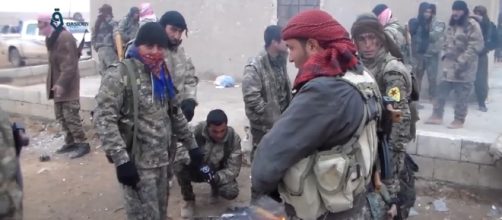One of the underreported stories of 2017 has been the ongoing destruction of the Islamic State, a terrorist enclave that was spread out through Syria and Iraq, from which ISIS launched attacks against targets in Europe and the United States. The success has been directly attributed to changes in policy by the Trump Administration, according to the Washington Post.
Islamic State territory regained
In Iraq, a coalition of forces that include the Iraqi Army and a number of militias have liberated the city of Mosul, which had been under occupation by ISIS for the past several years.
Meanwhile, a coalition of Arab and Kurdish fighters have invested Raqqa, the capital of the Islamic State, and has retaken 45 percent of that city. Both efforts have been supported by American Air Power. In all, 8,000 Square Miles of territory has been retaken from ISIS during the Trump administration so far.
The key to the Trump anti-ISIS strategy
The key to the Trump strategy against ISIS has been the devolving of decision making authority to local commanders in the field. Under the Obama administration, decisions about military operations were taken in the White House, inhibiting the ability of military commanders to react and adapt to rapidly changing conditions on the ground.
The Trump policy has been to set an overall strategy and to allow commanders to carry it out.
The strategy is also a change from that pursued during the Obama presidency. The previous administration followed a slow motion course of “degrade and destroy” in its effort against ISIS. However, the approach was not only occurring at a glacial pace but held the prospect of many ISIS fighters escaping to inflict murder and mayhem as a guerilla force.
Under Trump, the strategy is to annihilate ISIS and to kill or capture all of its fighters in the Middle East. Toward that end, coalition forces surrounded Raqqa before moving in to reduce it. 2,000 ISIS fighters are said to remain in the city, and all are expected to fight to the death in grinding, house to house fighting. The trade off in the new strategy has been a spike in civilian casualties.
Trump has also pursued a hands off approach to what happens in the region after ISIS is gone. The theory is that so-called “nation building” exercises have not worked very well when tried in Afghanistan and Iraq. The idea is that the future of the region will be left entirely in the hands of local people with minimal American involvement. In that way, the United States hopes not to buy itself a long term, expensive commitment of blood and treasure.


